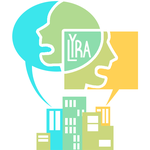Little Computer People
The believability of social characters and their impact on the virtual worlds they belong to has long been studied and explored in art and literature. Modeling social agents is widely considered to be a long-term research goal in the fields of entertainment, ecology, and computational social science. Bolstered by this growing interest in simulating social agents, research on agent models has spanned topics such as planning, procedural storytelling, and decision-making. However, social simulation research groups work in isolation, designing and discussing their character models with disparate approaches, often using project-specific terminology. This disparity makes identifying, classifying, and accumulating existing knowledge in the domain challenging.
I propose that since the modeling of agents has become an integral part of the scientific practice in our field, we must develop a common taxonomy and framework to discuss and simulate these agents. With this goal in mind, we conducted an in-depth analysis of a selection of projects, categorizing existing agent social interactions and comparing results from research-based and commercial social simulation works in the entertainment domain. We conceptualized a taxonomy that classifies agent interactions by their inter-agent behaviors, formalizes rules for the interaction space, and describes the effect of these behaviors on the social state of the agents. Further, I was able to combine methodologies from agent-based simulation systems and discrete event simulation to create a modular and flexible social physics engine. To our knowledge, this is the first time these methodologies have been integrated in this way.
This project describes our efforts to evaluate and operationalize a taxonomy and an accompanying framework or ``social physics engine’’. Our taxonomy and accompanying framework would allow scientists to reproduce and evaluate existing models, collaborate on standards, share advances with other researchers and practitioners, allow for better communication and methodologies developed for new techniques, and allow for a more rigorous model-to-model analysis.
